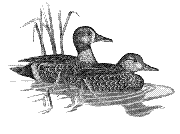United States Fish and Wildlife Service

Waterfowl Management Handbook
Date of this Version
January 1992
Abstract
Human disturbances of waterfowl can be intentional or unintentional. They may result from overt or directed activities or may be ancillary to activities not initially thought to be of concern to birds. Some of these disturbances are manifested by alertness, fright (obvious or unapparent), flight, swimming, disablement, or death. Therefore, persons responsible for waterfowl management areas should be aware of the problems from human disturbance and should design management and facilities that increase public appreciation of waterfowl.
In the last 20 years, the intensity of water-based recreation increased drastically, especially on inland waters. Waterfowl are wary, seeking refuge from all forms of disturbance, particularly those associated with loud noise and rapid movement. Occasionally, the problem of human disturbance of waterfowl resulted in formal litigation. In Nevada, for example, the Refuge Recreation Act of 1962 was affirmed to permit recreational use only when it did not interfere with the primary purpose for which the Ruby Lake National Wildlife Refuge was established.
Compatibility of an activity is based on site-specific effects on the major purposes for which a refuge was established. In a recent survey of harmful and incompatible uses on national wildlife refuges, 42 use categories were determined that could be potential disturbances of waterfowl.


Comments
Published in Diana H. Cross and Paul Vohs (eds.) Waterfowl Management Handbook. Fort Collins, CO: U.S. Fish and Wildlife Service, 1988. Online at http://www.nwrc.usgs.gov/wdb/pub/wmh/contents.html